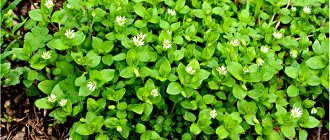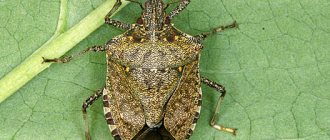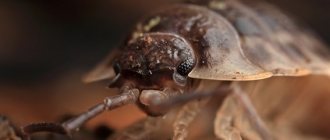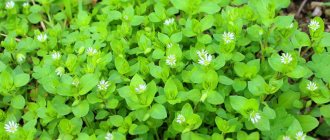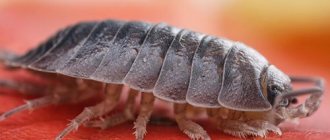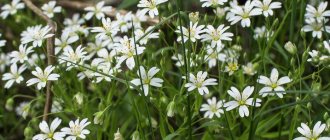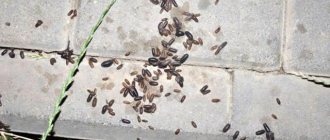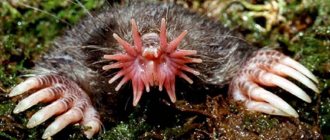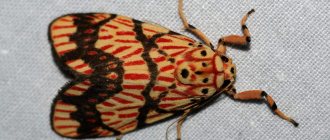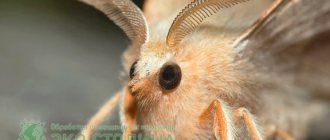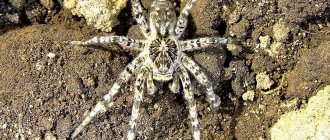The classic woodlice looks like a slightly flattened small bug with a body length of 10 to 15 mm, although larger specimens are also found. It has two pairs of antennae and is covered with a shell. The color of woodlice, as a rule, resembles modern metallic or gray with an admixture of brown. This inconspicuous appearance makes it easy to remain invisible on the surface of the earth or under a stone. Only in certain species are there stripes or barely noticeable patterns on the shell.
Many consider woodlice to be very unpleasant creatures that cause disgust and are extremely disgusted with them. This is understandable, since their appearance does not excite others at all. And if we add to this the fact that wood lice are considered pests, then there is every reason to be wary of them.
It is curious that the woodlice is not an insect , but a crustacean creature from the order of isopods. The first and direct evidence of this can be the gills, which are modified in some way compared to fish and arthropods, but, nevertheless, they help woodlice to breathe. Woodlice also have much more legs than insects. The nature and behavior of wood lice conceal a lot of interesting things. This will be discussed in our review.
Woodlice: photo
Woodlice: photo.
Instructions for disposal
IMPORTANT! When fighting pests, try to get rid of the factors causing them: moisture, garbage, etc.
Folk remedies
There are many ways to get rid of woodlice at home:
- Take 2 parts of dry kvass and 1 part of boiling water. Dilute the solution to be sprayed in the area where pests are concentrated.
- Mix 1 liter of water, 3 grams of red pepper, 3 grams of tobacco and 3 grams of ash salt. Spray the solution in all corners of the apartment. After eight hours, treat the bathroom with chlorinated water.
- Make a solution of one liter of water and 40 grams of bleach. Treat the area where wood lice accumulate with this solution, not forgetting the safety rules, and remove pets.
- Sprinkle table salt in the corners of the bathroom.
- A solution of boric acid also helps a lot, as it destroys the insect's shell; without it, they die very quickly.
- A wet rag or birch broom will serve as a trap, which will contain many parasites in the morning. They need to be shaken into a large container and doused with boiling water.
Chemicals
If traditional methods are ineffective, you should try chemicals:
- Tarax powder has a good effect. Universal for all insects. The solution is used to treat pipes, baseboards, ventilation shafts and other places where pests accumulate using a brush or syringe. When exposed to the active substance, the parasites die, which also infect other individuals.
- The German gel bait “Schabengel” is also universal.
- Dichlorvos spray “Varan”, “Tetrix”.
- Lures "Mole" and "Gett".
For soil: insecticides “Grom”, “Aktara”, “Ideal”.
ATTENTION! When using any drug, you must strictly follow the dosage instructions to avoid harm to nature.
Watch a video about how to deal with woodlice:
Description of the pest
Name: Woodlice Lat.:
OniscideaClass: Higher crayfish - Malacostraca Order: Isopods - Isopoda
| Habitats: | with high humidity |
| Nutrition: | scavengers |
| Means of destruction: | various chemicals |
In fact, the idea that wood lice are insects is wrong. These small creatures belong to the suborder of crustaceans and are considered one of its most developed representatives.
What do woodlice look like?
Woodlice: structure.
Most woodlice are small in size and their body length is from 1 to 2.5 cm. The color of these creatures is dominated by gray and brown shades. The body of woodlice has an oval, slightly flattened shape and is covered with an arched chitinous shell, divided into movable segments.
Animals have two pairs of antennae, one of which is much better developed than the other. The woodlice's visual organs are located on the sides of the head. The jaws of these crustaceans are intended exclusively for soft food, while the upper pair is devoid of tentacles.
Woodlice have 7 pairs of thoracic limbs. All limbs have the same structure and are used for walking.
How woodlice breathe
Woodlice on plants.
Unlike most other species of crustaceans, woodlice have adapted to life on land. The breathing of these animals is carried out using gills, which are located in the cavity of the internal branches of the thoracic legs.
Woodlice get their oxygen from the moisture covering their gills. That is why they settle in places with high levels of humidity. It is worth noting that some species have even learned to breathe ordinary atmospheric oxygen.
Interesting Facts
- In dry and hot environments, woodlice will increase movement. If you place it in the opposite environment, the effect will be the opposite.
- During the night, woodlice can rise to the height of the seventh floor.
- Ambient temperature affects the body color of these animals.
- In woodlice, the back part of the body molts earlier than the front part. Because of this, it feels like it consists of two parts.
- In California, in some areas, there are ten thousand individuals per square meter.
- If a male woodlice is infected with bacteria, it changes sex.
- Woodlice have blue blood.
- Several species have a non-uniform color and have unusual patterns that are similar to hieroglyphs.
Woodlice lifestyle and habitat
Saw woodlice
Not really
Despite their excellent adaptability to life on land, woodlice depend on humidity levels. In some species this dependence is stronger, in others it is weaker, and for this reason some of them settle on the coast of fresh and salt water bodies, while others can feel great in greenhouses, greenhouses, basements and bathrooms.
Where can you find woodlice?
Woodlice are active exclusively at night and therefore it is difficult to encounter them during the day. During daylight, animals hide in shelters that reliably protect them from harmful sunlight. Having settled near a person, the woodlice also chooses a safe place to hide.
In the wild, woodlice can be found:
- under stones;
- inside old, rotten stumps;
- in fallen leaves;
- under rotten trees lying on the ground.
Around people:
- greenhouses and cellars;
- cracks in the walls;
- voids behind baseboards;
- walls of sewer pipes.
What do woodlice eat?
Like other representatives of the crustacean suborder, woodlice are scavengers. In the natural environment, their diet mainly consists of decaying leaves, young shoots and rhizomes. Sometimes healthy parts of plants may also appear on their menu.
Woodlice on a plant.
Woodlice that have settled in residential areas easily adapt and feed on everything they find. The diet of “domestic” woodlice may include:
- small food residues;
- scraps of toilet paper;
- fungus and mold formed on various surfaces;
- soap scum.
Preventive measures
Prevention is based on following three simple rules.
- Purity. We take out the trash on time. We make sure that dirty dishes are not left on kitchen surfaces. Floors and walls are periodically washed well, especially in hard-to-reach places. We monitor the cleanliness of flower trays and flowerpots.
- Humidity. We don’t accumulate mountains of wet clothes, linen, towels. We regularly ventilate the premises. We use air drying devices. We ventilate things on the balcony. We check the functionality of the climate control equipment. We clean ventilation pipes and grilles. We fix plumbing breakdowns in a timely manner.
- Moves. If there are cracks and crevices in the floor or walls, we use polyurethane foam and sealant. If the wallpaper falls off, quickly glue it back up.
Woodlice are a kind of indicator that shows the condition of the apartment. Their presence indicates a low level of cleanliness and hygiene in the premises.
Peculiarities of woodlice reproduction
Woodlice and offspring.
Reproduction in these small crustaceans occurs in a very interesting way. First, copulation occurs and the female's testes are filled with seed. After some time, the female molts, and her body transforms slightly.
After such a restructuring of the body, one part of the seed fertilizes the eggs, while the other continues to be stored in the testes. When the first fertilized eggs are carried and hatched, the remaining seed fertilizes a new batch. It turns out that one copulation allows you to get two broods of small woodlice.
Why do they start in the apartment?
Woodlice appear in dark, warm and damp places in the house. There are also several other reasons for the appearance of these creatures at home, for example:
- Wet laundry.
- House plants.
- Garbage.
- Old books.
- Dirt.
The following may appear:
- under the bath;
- behind the toilet;
- under the sink;
- between piles of laundry;
- in the pantry;
- in potted plants.
Woodlice habitat
When choosing a place to live, woodlice prefer warm and humid areas. They can be found not only near reservoirs, but also in steppe or even desert areas. The habitat of these crustaceans extends over almost the entire world, but the greatest species diversity is noted in regions with a warm and humid climate.
In cooler climates, woodlice are more likely to live near people. These small crustaceans can be found in places such as:
- greenhouses;
- greenhouses;
- basements;
- cellars;
- bathrooms;
- the inside of old stumps;
- near open garbage and compost pits;
- under fallen leaves or piles of rotting tops;
- under rotten logs and boards.
Life cycle
The life of woodlice
The peculiarities of the life of crustaceans force them to hide during the day and crawl out of shelters at night. You can notice the insect in the evening or during the day in a dark room. Woodlice reproduction in nature begins in April-May. Females mate with males, the seminal fluid enters a special segment on the body. How woodlice reproduce in the future is a rather interesting process.
The seminal fluid is consumed gradually, the female does not need to be fertilized again to reproduce, but mating a second time can occur. Larvae are formed from fertilized eggs in the female's body. They are born as a copy of the female, but differ in size and color.
What harm can woodlice cause?
A small number of these crustaceans are not capable of causing serious harm to humans. But, if a large colony of woodlice has settled nearby, the following problems may arise:
- soil compaction and disruption of air circulation in the root system of plants;
- harming young seedlings;
- infection of plants by various infections and fungi;
- spoilage and contamination of food supplies;
- damage to walls and ceilings in the house.
Despite the possible harm, wood lice can also bring benefits. In the process of their life activity, they enrich the soil with useful substances and make it more fertile.
Is it worth fighting?
Despite the fact that woodlice do not pose any particular danger and do not cause significant harm, it is important and necessary to destroy them. They are not capable of biting a person or pet, but with their appearance in the apartment you can forget about coziness and comfort.
The appearance of woodlice in the house indicates the need for immediate sanitization , which will contribute to the timely destruction of arthropods and minimize the risk of the spread of various infections, fungi or lichens.
Important! It is necessary to distinguish woodlice from silverfish, which prefer to live in dry conditions and feed on sugar and food debris. Accurate identification of the pest species contributes to the effectiveness of its control.
If you do not start getting rid of woodlice, then soon, obviously, it will be impossible to stay in the apartment due to the constantly increasing number of individuals and the possibility of seeing them not only at night, but also during the day, and not only in the bathroom or cellar. In addition, over time, your favorite house plants and part of the vegetable and fruit harvest that is stored in the cellar will be lost.
The most common types of woodlice
The species diversity of woodlice is quite large. There are even giant marine species, the body length of which reaches 30-50 cm. On the territory of Russia you can find the three most common species.
Common armadillo
A small species up to 1 cm long. In case of danger, armadillos are able to curl up into a ball. Thus, their body is completely hidden under a durable shell. The armadillo most often lives in cellars and basements.
Rough woodlice
Unlike the armadillo, she cannot curl up into a ring, but she runs very fast. Rough woodlice is very common in residential buildings and apartments, and causes damage to indoor plants and food products.
Woodlouse Rathke
Representatives of this species live in large numbers in Europe and Russia. Their habitats are most often located in dense urban areas. The body of woodlice of this species is more narrowed and flattened, and the shell is light in color.
In large numbers, woodlice will cause discomfort and harm to indoor flowers. They must be dealt with using accessible methods!
Stages of creature development
After some time, larvae emerge from woodlice eggs, but even after the larvae are born, they still live for some time in the so-called “brood chamber.” There they grow and develop for about forty or fifty days. The main difference between larvae and adult representatives of this class is that they have only twelve legs, while adults have fourteen. Before the adult stage, the larvae molt up to ten times. All these molting processes for woodlice larvae take approximately three months.
Prevention of recurrence
- The house should be dry and clean.
- Keep an eye on plumbing and cracks in the house.
- Remove excess water after showering.
- Wash clothes.
- Do not leave laundry after washing, carefully remove any remaining water from the room.
- In the bathroom, it is not advisable to dry freshly washed clothes or purchase a dehumidifier.
- Do not leave dirty dishes in the kitchen.
Various species of woodlice have adapted to different environmental conditions , and a semi-rigid shell helps them in this. To prevent these creatures from appearing in your home, you should follow a number of the above methods to avoid the appearance of woodlice, since it is better to follow these rules than to later fight with these domestic parasites.
